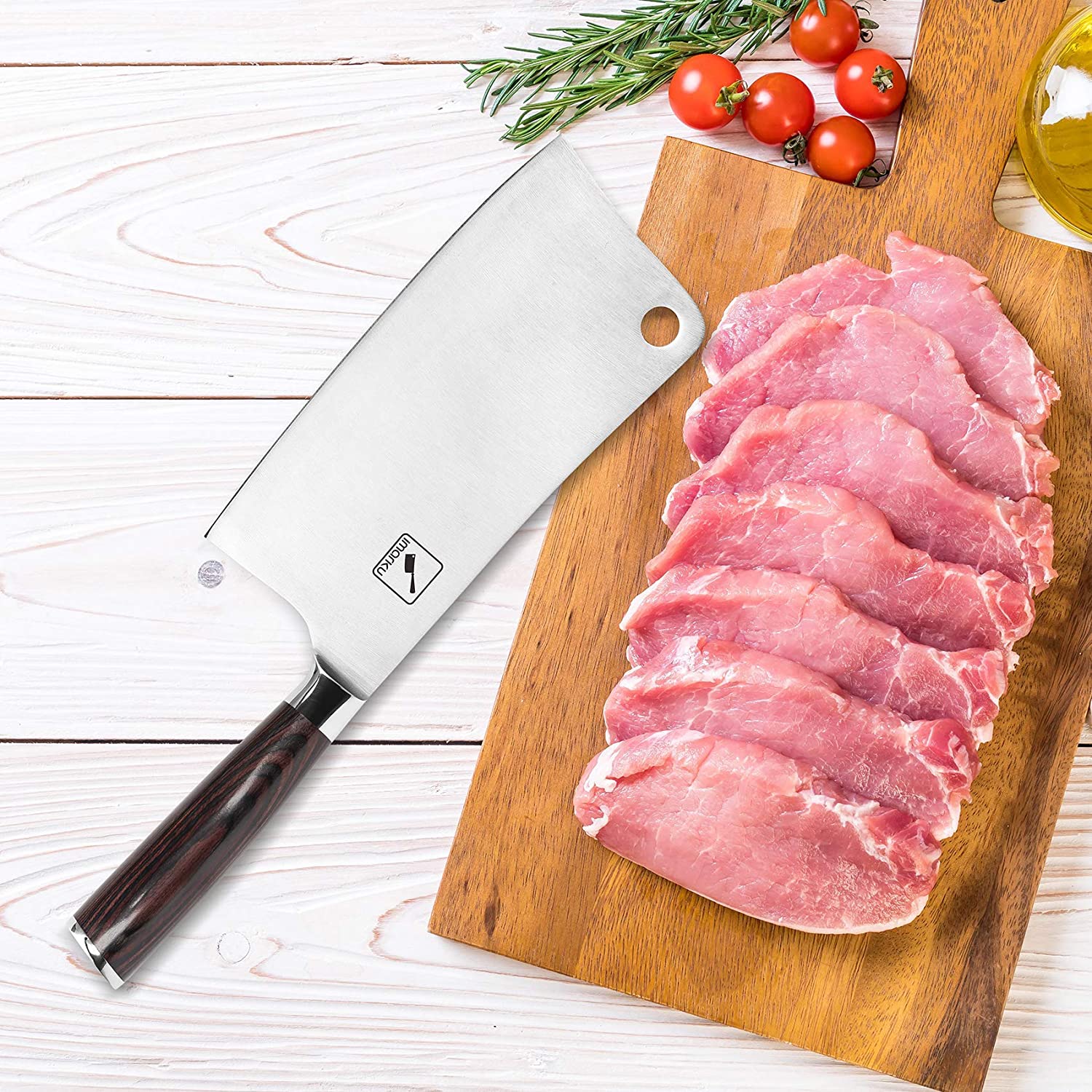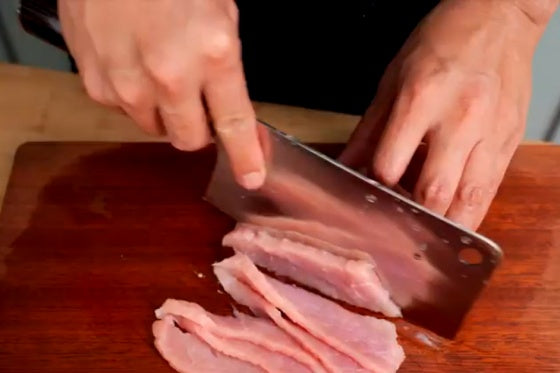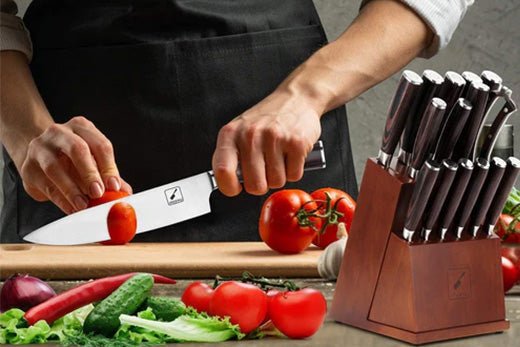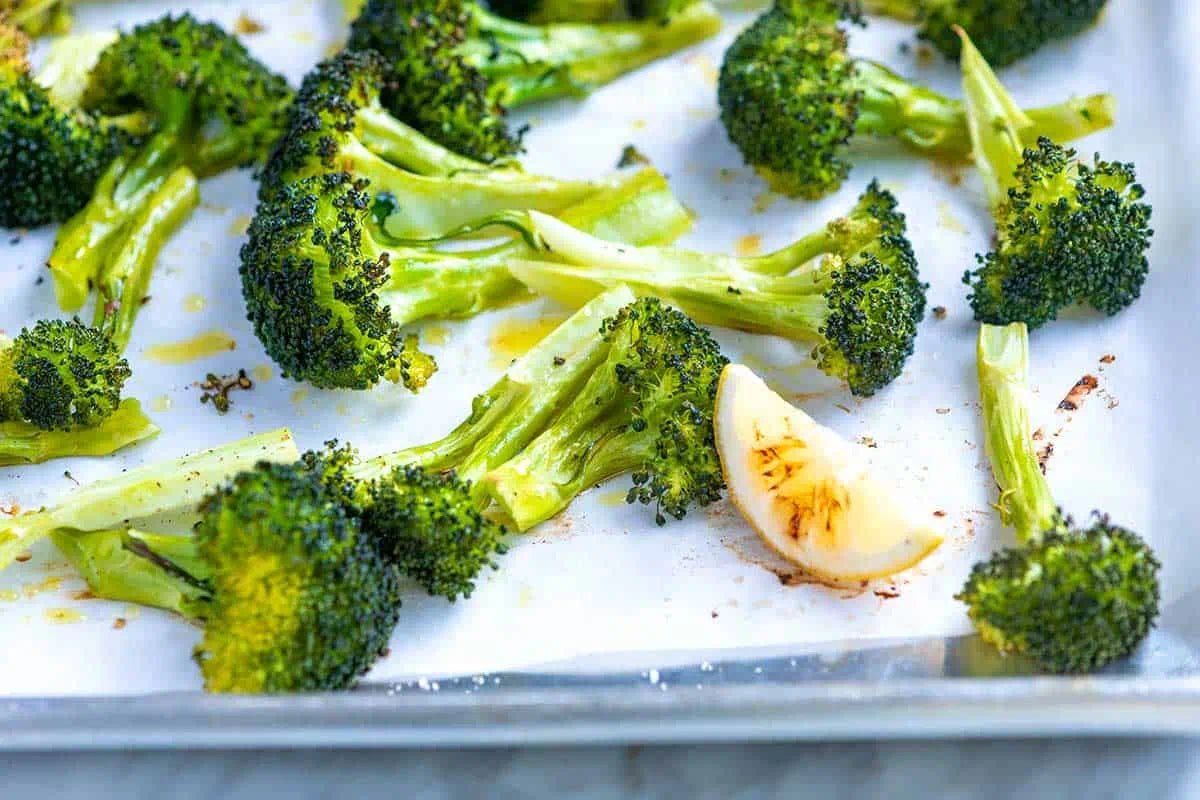TABLE OF CONTENTS
If you love serving large pieces of meat for weekend parties or preparing steaks for a special menu, you need to have the right knife for cutting meat in the first place.
For most home chefs, the regular kitchen blades are used for meat cutting, but you must own the suitable knives for which the task is mentioned. And when you have to shop for cutlery, selecting the right knives can become overwhelming. Laying your hands on the premium knives for cutting through meat is undoubtedly a tricky proportion since different kitchen blades can perform different tasks.
What to Consider When Choosing The Best Knife For Cutting Meat

It's crucial to factor in several criteria when looking for the best meat knife. You deserve to work with the best meat knives, even if you are not a professional chef. Let's consider a few factors that can help you narrow your choices.
Size
The most suitable size of the knife depends on the size of your hand, the functions you expect the knives to perform, and your personal preferences. No matter the size of the blade, make sure that it's comfortable for your hand and that you can maneuver it well with regard given to performance.
Smaller knives, measuring up to 6 inches are effective in working with small chunks of meat or peeling and slicing potatoes. On the other hand, knives measuring around 8 inches can be more versatile in various cooking and prepping tasks. In comparison, those with longer blades of 10 inches are great for oversized items like loaves of bread, watermelons, or pumpkins.
Weight
Like all other knives, the ones for cutting meat should make the user feel comfortable. Some users want their knives to be heavier so that gravity can work while moving the blade. While others may opt for lighter kitchen blades since they will be easier to maneuver and direct through precise movements regardless of the meat size you are willing to cut.
It's worth mentioning that even though two knives may have identical weights, different users may have different feelings while holding them in their hands. Thus, you should choose the one that feels relaxed and comfortable in your hands.
Balance
The perfection of balance primarily lies in the user's palms, and they are the best judge to determine it by holding the knife for cutting meat by holding it but its handle. It is not the right piece for you if you feel uncomfortable and weighted towards the rear end of the handle or the blade.
Opting for an unbalanced knife won't set in your hands, and it may push you to work harder. You must also check the balance from side to side. Otherwise, it will feel unstable and make you feel like it wants to wobble on one side.
Blade
Various types of blades are crafted for use in different kinds of food, and some of them include:
Serrated-edge: These blades have edges that resemble saws, and the size of the edge may vary along the edge. Blades with serrated edges are used for cutting hard and thick foods like tough crusts, thick-skinned fruits, and meat.
Plain-edge: In most cases, knives have blades with plain edges and are designed to be straightforward. These knives are great for slicing through soft and hard foods without causing them to fray while cutting.
Granton blade: Granton is the name of a popular knife brand from Sheffield, England, and it has become synonymous with the blade's edge. They come with rows of scallops on both edges, which helps in creating tiny air pockets between the blade and the ingredients being cut. This allows the food to be released from the knife blade effortlessly and saves it from tearing and ripping, which is helpful in cutting meat and fish along with other foods.
Hollow-edge: These blades come with indentations right above the blade edge. These are deployed to create tiny air bubbles that help ensure a clean cut and prevent the food from being stuck to the blade. These blades are highly effective when you want to have thinner meat slices.
Handles
The handle of your knife for cutting meat can be made from stainless steel, plastic, wood, and other materials. Each has pros and cons, and you should weigh them accordingly. Here are some common choices:
Plastic handles: The first is the most unpopular choice among professionals and chefs. They can be easily cared for compared to other materials, but they can be easily cared for brittleness and splitting due to damage over a long period. Plastics may also feel slippery while used, which can become dangerous when you have to cut meat.
Wooden handles: Though wooden handles are generally considered the most appealing knife handles, they are challenging to care for. For instance, you have to wash them with a mild cleanser and rub it with a clean, damp cloth. Sometimes, they may also require mineral oil treatments.

Stainless steel handles: These handles are considered the most hygienic and durable, but they can sometimes become very slippery when cutting wet ingredients. For this reason, most premium knives have extra ridges and indentations along the handles to give additional grip. Sometimes, these knives can become extremely heavy, for which the craftsmen have endowed them with hollow handles.
The Best Knife For Slicing Through The Meats
Without the proper knowledge, it may be easy to lose a lot of money in buying a set of premium knives that you may hardly use. To make matters even more confusing, the naming conventions for kitchen blades can become difficult for a novice to understand. To help you understand it, we have compiled the top knife styles to help you cut through the meat.
The Chef's Knife
A chef's knife, sometimes referred to as a cook's knife comes with a long broad blade powered with a straight edge. It has the widest point across the heel region and finally tapers to a pointed tip.
A chef's knife, sometimes referred to as a cook's knife comes with a long broad blade powered by a straight edge. It has the widest point across the heel region and finally tapers to a pointed tip.
Best used for:
As chef's knives have curved blades, they can rock to and fro on the chopping board, which is very useful when you have to chop or dice many veggies or fruits at once.
It's also a knife for cutting meat since it has a broader heel area that lets it take a lot of pressure when you have to cut something heavy. Besides meat, you can also use a chef's knife for cutting harder and dense foods like shallots or potatoes.
Not suitable for:
- Carving very dense food
- Slicing loaves of bread or deveining prawns
- Disjointing any cuts
It's an all-rounder and amongst the most versatile and stable kitchen blades used for regular mincing and dicing jobs.
The Boning Knife

A boning knife comes with a slimmer blade and an ultra-sharp edge typically tapered upwards to a fine point. It's generally very short and measures up to 6 inches in length. The construction of these kitchen blades is very rigid, but the blades are very delicate to allow fine handling of delicate meat.
Best used for:
You will need boning knives to cut meat and bones and trim cartilage to create a perfect joint before preparing. The slim-styled blade, coupled with a pointed tip, makes a flawless balance when cutting around the bone without destroying the surrounding flesh.
Since the blades of boning knives are highly sturdy, they can also be used for cutting through cartilage. When you have to debone beef or pork, you have to apply some more pressure, while you can also work on poultry with excellent flexibility. Learn more about the uses and care for a boning knife.
Not suitable for:
- Slicing bread
- Cleaving meat
- Smaller precision tasks
Boning knives are meant to give the user better maneuverability, and they are very light. You can count them as sturdy and comfortable knives that don't require much pressure.
The Bread Knife

These knives have a long, evenly-sized blade with a sharp edge that is typically serrated. Bread knives are designed to handle both softer and harder items.
Best used for:
The long blade, coupled with the power of a sharp serrated edge, makes it the perfect knife for cutting meat and different kinds of bread like bread rolls, baguettes, crusty bread, and bagels.
The grooved edge primarily contributes to it and allows the user to cut through softer bread without crushing or destroying its shape. You may also use these knives for slicing through soft and fluffy cakes without pushing the sit out of the spongy structure.
Not suitable for:
- Precision jobs like mincing or peeling
- Cleaving meat bones
- Deseeding fruits or deveining prawns
If you don't possess a cake leveler, you may use a bread knife to even out your sponge cakes after baking them.
The Cleaver

Cleavers sometimes referred to as butcher blades, come with flat, rectangular, and large blades. But they are also available in smaller sizes, depending on the function they have to perform. They are the heaviest and broadest knives you will encounter, and sometimes, they even come with a hole close to the spine, allowing you to hang it when not used.
Best used for:
A cleaver is best used for chopping raw meat for butchery or making smaller pieces before preparing meals. The heavy and enlarged design allows fast and easy cutting through bones, thus making it the most suitable knife for prepping raw meat. Considering their heavy size, these kitchen blades are mainly used in raw meat rather than cooked stuff. More tips on using a cleaver.
Not suitable for:
- Small and delicate tasks like cutting fruits or vegetables
- Fast and straightforward cutting for smaller dishes
Cleavers' flat and bulky surfaces can also crush herbs like ginger and garlic against any flat surface.
Tips For The Perfect Cuts
Knowing how to cut through meat using your kitchen blades skillfully is a critical part of preparing any dish. Almost all recipes used for grills involve workings of the knife to a certain extent. First of all, you must ensure a firm grip on your knife for cutting meat. You may also have to pinch on the grip if you prefer by wrapping your three fingers around the handle and pressing the blade with the index finger and the thumb. This will give you better control while cutting hard and large meat pieces.
You should secure the meat or other ingredients that your working on with your guiding hand and save your fingertips by using the clawing grip so that your knuckles can guide the blade as you work through the meat.
Choose The Right Knife Set For Your Meals

Also, make sure you are using the right knife for the task. Quite like you will never be able to cut a steak with a butter knife, in the same way, you cannot depend on your boning knives for slicing loaves of bread. Having the right knives for cutting, slicing, and deboning meat from the house of reputable craftsmen like iMarku can give you unmatched experience and make the job highly enjoyable.
The Bottom Line
Regardless of whether you are a home chef or aspiring to touch new heights with your culinary arts, this guide will surely help you choose the best knife for cutting meat and use it in the desired way. While some knives are meant to serve some specific purposes, others can be used for performing a myriad of jobs.
With all the varying styles, brands, and names of kitchen blades, selecting the ones that cater to your needs can be overwhelming. But when you are equipped with the right knives made by renowned makers like iMarku, you can rest assured that your investment can serve you for many years while giving top-level performance every single time.






















Leave a comment
All comments are moderated before being published.
This site is protected by hCaptcha and the hCaptcha Privacy Policy and Terms of Service apply.